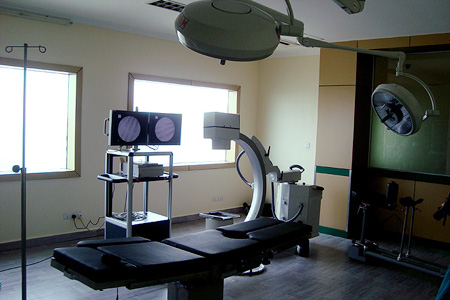1. General Surgery
The Department of Surgery at Sen Sok International University Hospital is a well established unit with facilities to carry out full spectrum of surgical procedures, and well equipped to provide critical care to patients of high risk.

- 24 Hour surgical cover for accident and acute cases in need of urgent surgery.
- All varieties of poly trauma cases are handled expeditiously by a trauma team comprising of General Surgeons, Orthopeditions. Comprehensive specialized surgical care is provided in the following spheres of surgery by a team of senior consultants of more than 10 years experience, who have undergone training / worked at leading medical institutions in abroad. artment of Surgery at Sen Sok International University Hospital is a well established unit with facilities to carry out full spectrum of surgical procedures, and well equipped to provide critical care to patients of high risk. Accident (Poly Trauma) and emergency services.
- Diseases of esophagus, stomach and intestines
- Gall bladder diseases & surgical jaundice
- Colorectal benign and malignant diseases
- Anorectal diseases like piles, fissures & fistula
- Benign and malignant diseases of breast and thyroid
- Surgery for appendix, hernia, hydrocele and testes related problems
- Laporoscopic and minimal access surgery for abdominal problems
- Peripheral vascular, venous and thoracic surgery

2. Laparoscopic Surgery
Laparoscopic surgery, also called minimally invasive surgery (MIS), Band-Aid surgery, keyhole surgery is a modern surgical technique in which operations in the abdomen are performed through small incisions (usually 0.5-1.5cm) as compared to larger incisions needed in traditional surgical procedures. There are a number of advantages to the patient with laparoscopic surgery versus an open procedure. These include reduced pain due to smaller incisions and hemorrhaging, and shorter recovery time. Advantages; there are a number of advantages to the patient with laparoscopic surgery versus an open procedure. These include: Reduced hemorrhaging , which reduces the chance of needing a blood transfusion. Smaller incision, which reduces pain and shortens recovery time, as well as resulting in less post-operative scarring. Less pain, leading to less pain medication needed. Although procedure times are usually slightly longer, hospital stay is less, and often with a same day discharge which leads to a faster return to everyday living. Reduced exposure of internal organs to possible external contaminants thereby reduced risk of acquiring infections.


